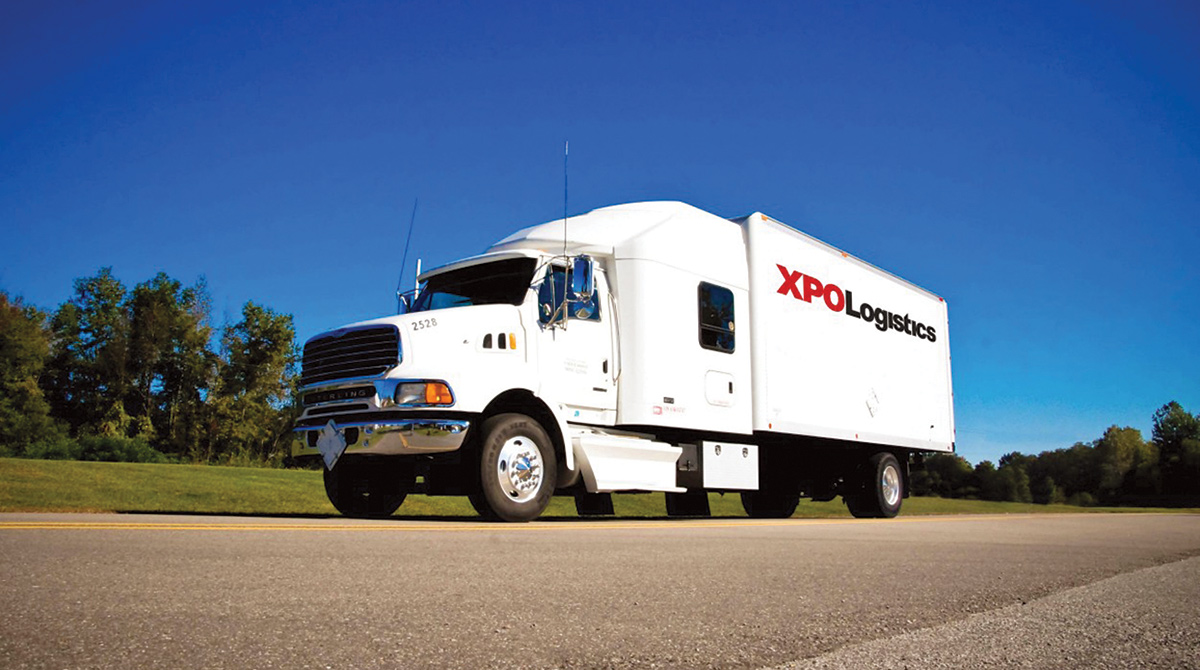XPO Posts First Full-Year Profit Since Jacobs Took Helm in 2011

This story appears in the Feb. 27 print edition of Transport Topics.
XPO Logistics posted its first full-year profit with Bradley Jacobs at the helm of the organization and also was profitable in the final quarter owing to strength in the less-than- truckload division.
The company said Feb. 21 that its profits in the fourth quarter marked the third straight period of positive net income.
XPO earned $27.3 million, or 22 cents a share, on quarterly revenue of $3.68 billion. That compares with prior-year results of a net loss of $62.8 million, or 58 cents, on revenue of $3.34 billion.
“It was a great quarter,” Jacobs said in an interview with Transport Topics. “The strategy is working. We’re producing high revenue growth and returns for investors.”
For the full year, the Greenwich, Connecticut-based company recorded net income of $63.1 million, or 53 cents a share, compared with a loss of $245.9 million, or $2.65, the previous year.
The company also said Feb. 21 that improvement in its less-than-truckload business contributed to the gain.
Annual revenue nearly doubled to $14.62 billion from $7.62 billion.
XPO last had a full-year profit in 2011, when Jacobs, the chairman and CEO, purchased a controlling interest in September of that year.
XPO ranks No. 3 on the Transport Topics Top 100 list of the largest U.S. and Canadian for-hire carriers.
The North American LTL business is XPO’s largest single division. In the fourth quarter, it generated operating income of $54.7 million on revenue of $844.8 million, which compares with 2015 fourth-quarter operating income of $26.8 million on revenue of $850.9 million.
Quarterly LTL operating ratio (expenses as a percentage of revenue) improved to 93.5 from 96.9.
Making more money on less revenue was the result of “our investments in sales, training and incentives — a whole slew of operating improvement efforts,” Jacobs said, especially seeking out denser freight.
Jacobs said Midwestern farmers are good LTL customers, particularly hauling seeds.
“They’re dense and have a high weight and have a low potential for damage — it’s not like glass,” he said.
As for the current year, Jacobs said his customers are generally encouraged.
“The combination of lower taxes and less government regulation expected means they’re optimistic and doing more business,” he said.
XPO does a majority of its work in North America but also has a major European presence. Its other main business lines include last-mile delivery, expedited transportation, contract logistics, freight brokerage and freight forwarding.
Expedited was mixed, Jacobs said. “The volumes were soft,” but the service is good for cross-selling into other lines.
Beyond the change to an annual profit, Jacobs said in the earnings statement he was “pleased that we delivered record fourth-quarter results for … cash flow from operations, adjusted [earnings before interest, taxes, depreciation and amortization] and free cash flow. We generated the strongest growth in last-mile and contract logistics, driven primarily by e-commerce, more than offsetting a weak intermodal environment.”
For XPO, e-commerce means heavy goods, Jacobs said, usually more than 150 pounds per shipment.
Ovens, refrigerators, clothes washers and dryers, home electronics, fitness equipment and furniture are common e-commerce deliveries, he said.
“Six or seven years ago, people didn’t buy this online, so e-commerce, I think, is a secular trend and not a cyclical one. It’s not a flash in the pan,” Jacobs said.
XPO is involved with e-commerce in two of its major segments, he said: last-mile delivery and electronic fulfillment in the contract logistics group.
The company acquired Con-way Inc. at the end of October 2015, making XPO North America’s third-largest LTL behind FedEx Freight and YRC Worldwide. Among the year-over-year details of the LTL quarterly results:
Gross revenue per shipment rose to $263.81 from $253.91. Yield, as measured by revenue per hundredweight, rose by 2.8%, including fuel surcharges, and by 3% before surcharges.
Average length of haul increased to 820 miles from 807.4.
In contrast, there was a decrease in pounds hauled per day, to 73,091 from 74,373, and in the number of shipments per day, to 54,068 from 55,582.

